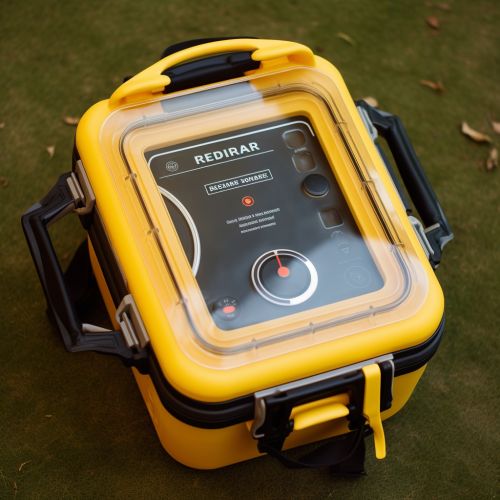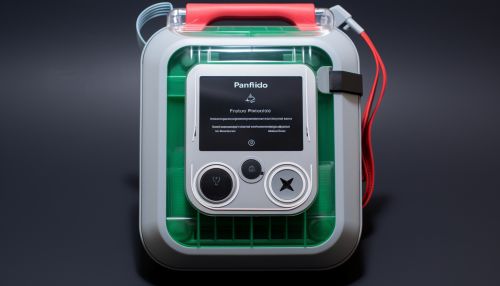Defibrillator
Introduction
A Defibrillator is a device that delivers a dose of electric current (often called a counter-shock) to the heart. Although its primary function is to correct life-threatening fibrillations of the heart, particularly ventricular fibrillation and pulseless ventricular tachycardia, it is also used in some cases of atrial fibrillation and atrial flutter.


History
The development of the defibrillator marks a significant advancement in the field of cardiology. The earliest defibrillators were developed in the mid-20th century, with the first successful use of a defibrillator on a human occurring in 1947 by Dr. Claude Beck. The device was large, bulky, and required a direct application to the exposed heart.
Types of Defibrillators
There are several types of defibrillators, each with its own specific use and characteristics. These include:
- Manual External Defibrillators: These are used in conjunction with electrocardiogram readers, which allow healthcare professionals to determine the patient's heart rhythm and manually determine the appropriate electrical charge to deliver.
- Manual Internal Defibrillators: These are similar to external defibrillators, but they are designed to deliver the electrical charge directly to the heart during an open chest operation.
- Automated External Defibrillators (AEDs): These devices are designed to be used by laypersons in emergency situations. They automatically diagnose the life-threatening cardiac arrhythmias and are able to treat them through defibrillation.
- Implantable Cardioverter-Defibrillators (ICDs): These are implanted directly into the patient's body, and they monitor the heart's rhythm. When they detect an abnormal rhythm, they deliver an electrical shock to correct it.
- Wearable Cardioverter Defibrillators (WCDs): These are worn by patients who are at risk for sudden cardiac arrest. Like ICDs, they continuously monitor the patient's heart and deliver a shock if an abnormal rhythm is detected.
Mechanism of Action
Defibrillators work by delivering a dose of electric current to the heart. This current depolarizes a critical mass of the heart muscle, terminates the arrhythmia, and allows normal sinus rhythm to be reestablished by the body's natural pacemaker, in the sinoatrial node of the heart. Defibrillators use various types of electrical waveforms to achieve this effect.
Usage and Procedure
The use of a defibrillator is typically a part of Cardiopulmonary resuscitation (CPR), which involves chest compressions, artificial ventilation, and early defibrillation. The procedure for using a defibrillator varies depending on the type of device, but generally involves placing electrode pads onto the patient's chest, allowing the device to analyze the patient's heart rhythm, and then delivering an electric shock if necessary.
Risks and Complications
While defibrillators can save lives, they are not without risks and potential complications. These can include skin burns, heart damage, and in rare cases, initiation of a new, more dangerous arrhythmia. However, the benefits of using a defibrillator in a life-threatening situation generally outweigh these risks.
Future Developments
The field of defibrillation continues to advance, with ongoing research into new technologies and methods. This includes the development of more sophisticated implantable devices, improvements in the effectiveness and safety of external defibrillators, and exploration of new ways to predict and prevent sudden cardiac arrest.
